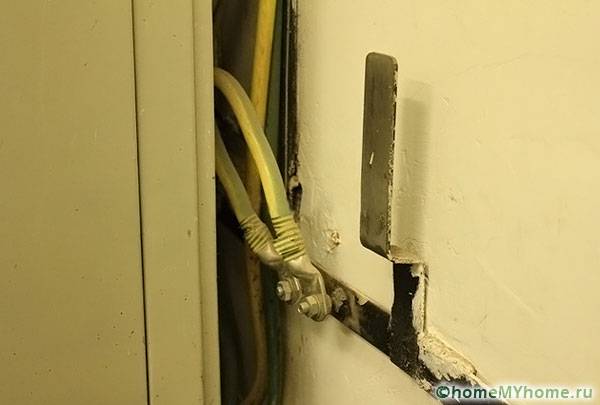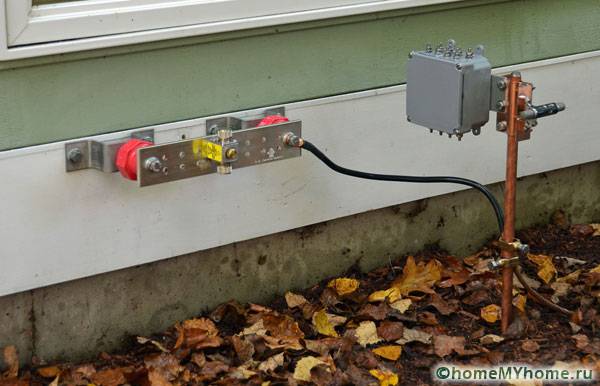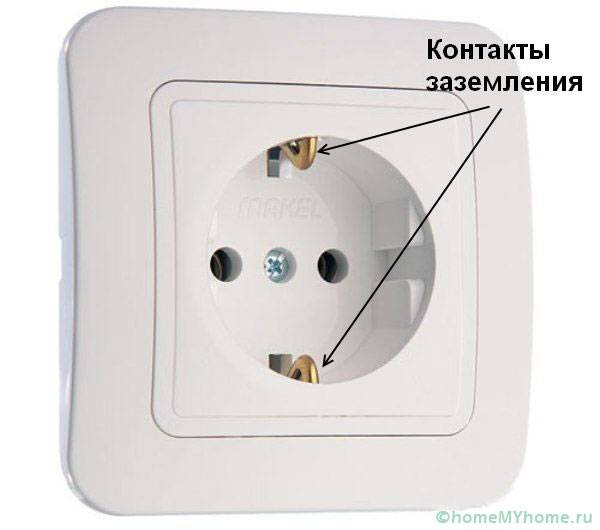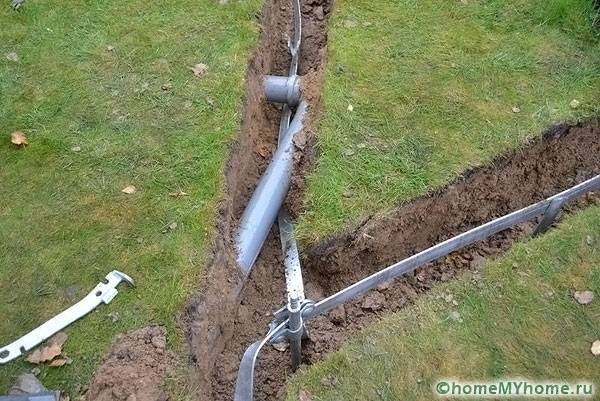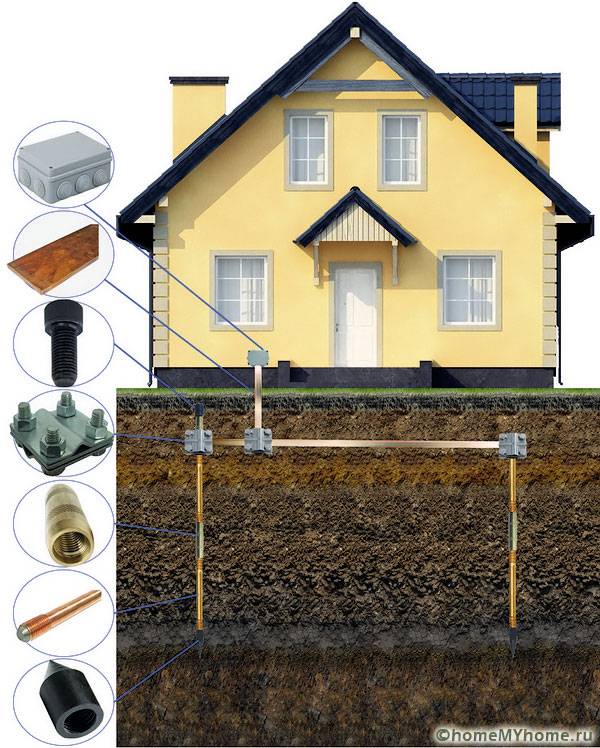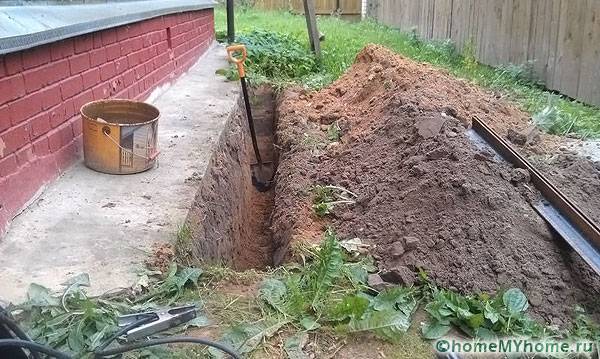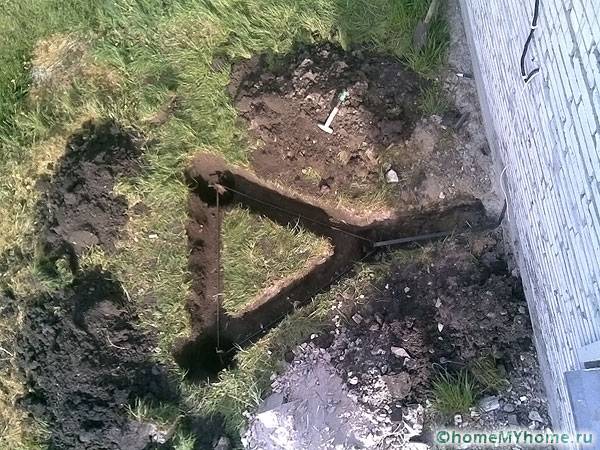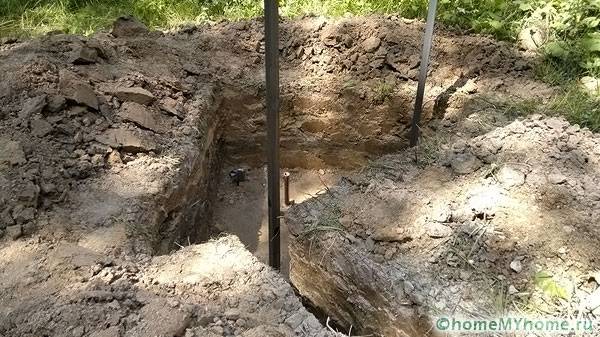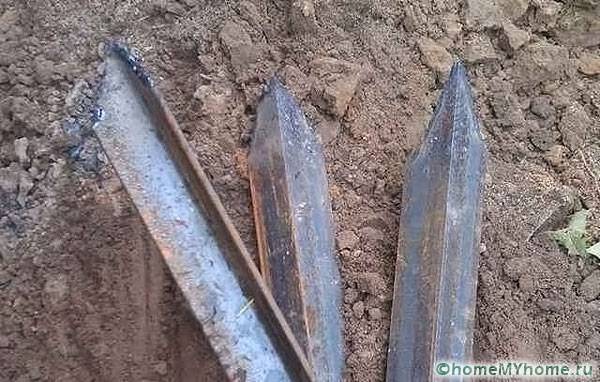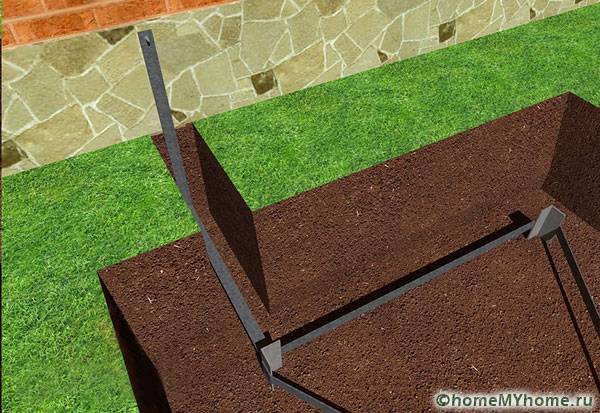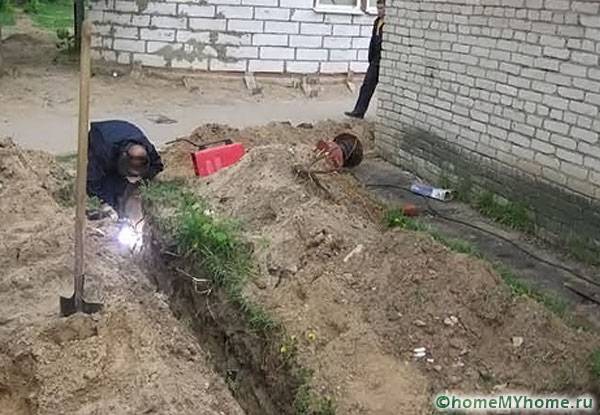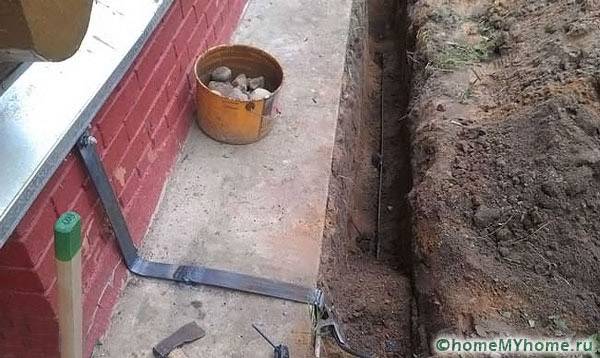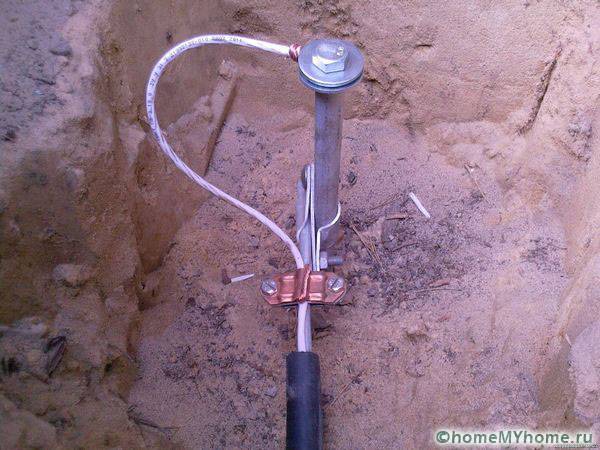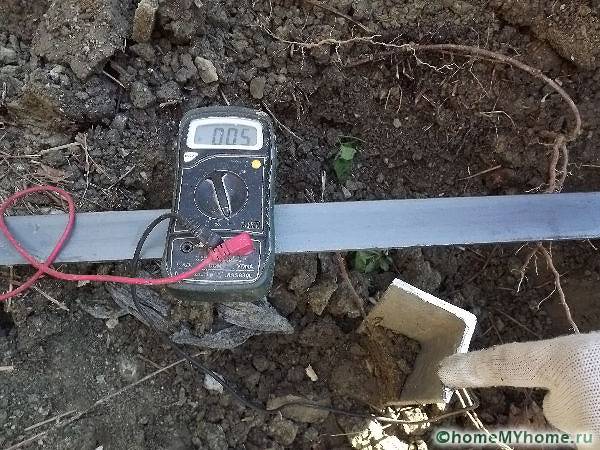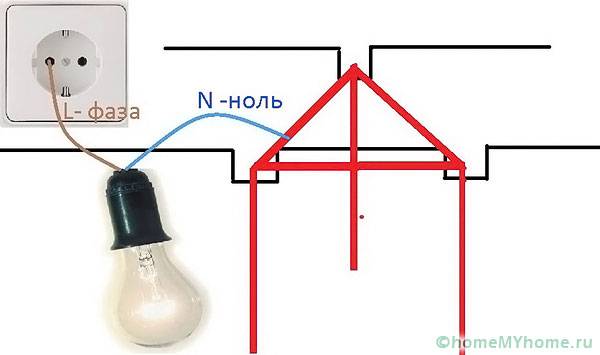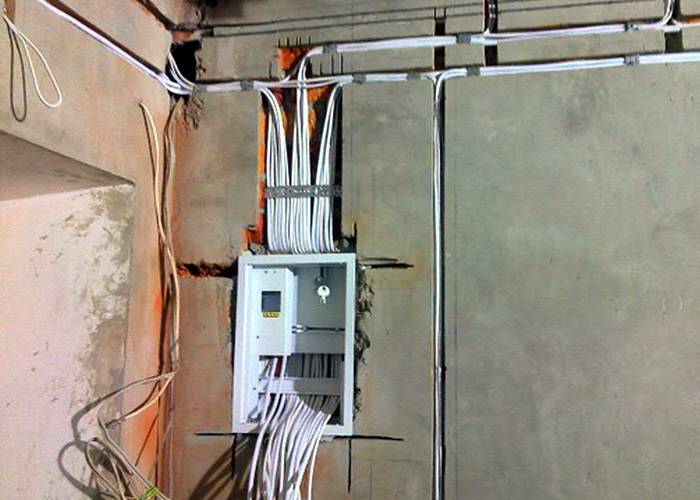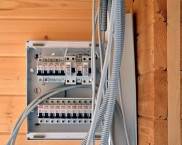Do-it-yourself grounding in a private house 220V and 380V: the nuances of the device
Fife modern man, living in their own home, it is impossible to imagine without the comfort and convenience that it provides all kinds of household appliances. People are so accustomed to the most useful functions running on electricity of domestic helpers, often do not pay attention to them, taking it for granted. But electricity can not only create a comfortable living environment, but also carries a certain danger. To reduce the likelihood of this danger requires grounding in a private house with your own hands 220V.
The content of the article
For what purposes arranged ground?
The device's own home ground is needed for several reasons.
There are specific rules requiring grounded house - otherwise you can get a very serious penalty. In addition, some equipment, without which the comfort of a private home is not possible (for example, gas boiler), you simply cannot operate without this protection.
The main purpose of tokozaschity device is to eliminate the risk of electric shock from touching the body of a household appliance. when spoiled wiring, eg, washing machinePhase hanging on her body. One has only to touch the device, and you can get very sensitive electric shocks, which can be fatal. If there is current protection simply flee the path of least resistance.
Proper grounding device to minimize the amount of noise in the power supply. It also significantly reduces the electromagnetic radiation, the negative effects on health and the health of living men.
types of grounding
Two types of grounding in a private house, to arrange their own hands 380 and 220: Protective and work.
working
It is arranged mainly in order to prevent a sudden increase in voltage in appliances used in everyday life, which occurs due to a violation of the insulation of the transformer winding. Effective protection is also provided when lightning strikes a building - due to the fact that the entire discharge goes into the ground, household appliances do not fail.
Protective
This type is arranged by forcing the connection through the conductor of the electrical appliance body to the ground. As a rule, for the device of such a grounding, it is quite enough to have sockets with a grounding terminal, but some types of equipment require additional protection.
Protective grounding must be provided for the following household current consumers:
- Washing machine... Its operation takes place in conditions of high humidity, while the case has a large electrical capacity.
- Microwave. The main element of this device is a high power magnetron. With insufficient contact grounding in the socket a significant increase in the level of electromagnetic radiation is possible. Most manufacturers provide for the installation of a terminal on the back of the oven for additional protection.
- A computer. The power supply unit of this undoubtedly irreplaceable device often creates voltage on the case of the system unit, which is unsafe for the user. The PC is grounded by connecting the ground wire to one of the system unit screws.
- Boiler. This device uses an electric current to heat water. Any current leakage to the case of the device operating in high humidity conditions is dangerous to humans.
Grounding 220V and 380V: differences
Do-it-yourself grounding in a private house 380V and 220V has only minor differences.
The circuit in both cases is constructed in the same way, the only difference is in the way of connecting to the home power supply system. In a single-phase 220 V network, sockets with three contacts are used: phase, zero and grounding. In three-phase networks with a voltage of 380 V, 5 wires and sockets with five poles are used: the same zero and ground, but there are three phases.
Helpful information! It is not allowed to use a neutral wire for grounding in private houses with your own hands 380 V and 220 V - this can damage expensive household electrical appliances, as well as create a real danger for people in the house.
Types of ground electrodes
Earthing switches can be used in two types:
- natural;
- artificial.
Metal structures, deeply set in the ground, or the reinforced concrete foundation of a building can act as natural ground electrodes.
Artificial ground electrodes used for an independent 220V grounding device in a private house are divided into the following types:
- horizontal - made of round or strip steel, laid in a trench parallel to the ground;
- vertical - pieces of steel corner, hammered into the soil;
- buried - products made of strip steel, laid on the bottom of the trench along its perimeter.
For the manufacture of protection devices are mainly used:
- round steel Ø 10-16 m;
- steel strip with a section of 40x4 mm;
- angular steel 50x5x5 mm.
Important! It is extremely undesirable to use fittings as a ground electrode - it is made of hot-tempered metal, which has a relatively low electrical conductivity.
Installation of current protection
Seat selection
First of all, you should determine the place where the ground loop will be made, since the safety of the system depends on it.When the protection is triggered and the electricity is drained into the ground, neither people nor animals should be in the place of the outlet, as this can lead to death.
The branch is most conveniently located behind the house near fence, stepping back from the edge of the foundation at least 1 meter. For fencing the danger zone, it will be useful to build a small fence.
To hide the grounding in a private house with your own hands 220V and 380V, to improve the territory, on this site, for example, you can lay a sculptural composition of boulders. In this case, no one will be able to come too close to the danger zone, and the backyard area will look beautiful.
Excavation
Do-it-yourself grounding in a private house 380V circuit consists of three metal conductors immersed in the ground at a distance of 2 m from one another.
A trench is dug with a shovel in the form of an equilateral triangle with side lengths equal to 2 m. Its depth should be 0.5-0.7 m. Exactly the same trench is dug to the porch of the house.
Assembling the structure
The assembly of the circuit structure can be called the main stage at which grounding in a private house with your own hands 220V circuit provides for driving electrodes into the ground to a depth of two meters. In this case, the tops should be left on the surface for tack welding.
When driving, the end to be driven in should be slightly sharpened to facilitate driving into the ground.
After driving all the pins, plates are welded to their top to obtain a metal frame in the shape of a triangle.
A separate plate must be laid in a trench dug to the porch, it also clings to the near vertex of the triangle with one end.
Then a cable is connected to the plate with a bolt, the trenches are covered with soil.
Helpful information! If there are sandy soils at the site of the circuit device, their conductivity can be increased with a salt solution. The only drawback of this method is the rapid oxidation of the metal, which over time will lead to a decrease in grounding power.
Checking for correct installation
Upon completion of the work, it is imperative to measure the resistance of the arranged grounding.
The loop resistance should be:
- for a network with a voltage of 380V - 2 Ohm;
- for a 220V network - 4 ohms.
For measurements, it is recommended to use a multimeter, the cost of which is quite high, but you can go the other way.
Functionality can be easily checked with a lamp over 100W. To do this, you need to connect the lamp with one contact to the phase, and the other to the ground loop. The bright light of the lamp indicates the correct installation, dim burning - about too weak contact between the elements of the circuit and the need to more responsibly approach the connection of the joints.
The complete absence of a lamp glow means that there is an error, to eliminate which, you may have to completely check the entire system.
Conclusion
An independent grounding device in your own home cannot be called an impossible task. To solve it, you just need to choose the type of contour and stock up on the required materials and tools. To perform welding work, you can attract friends or hire a specialist, dig trenches - it is quite within your power and yourself. If there is not enough knowledge in the field of electrical engineering, you can, again, contact your friends or invite a specialist from outside. In any case, do-it-yourself grounding will be much cheaper than concluding an agreement with some company.
Video: how to properly ground your home




